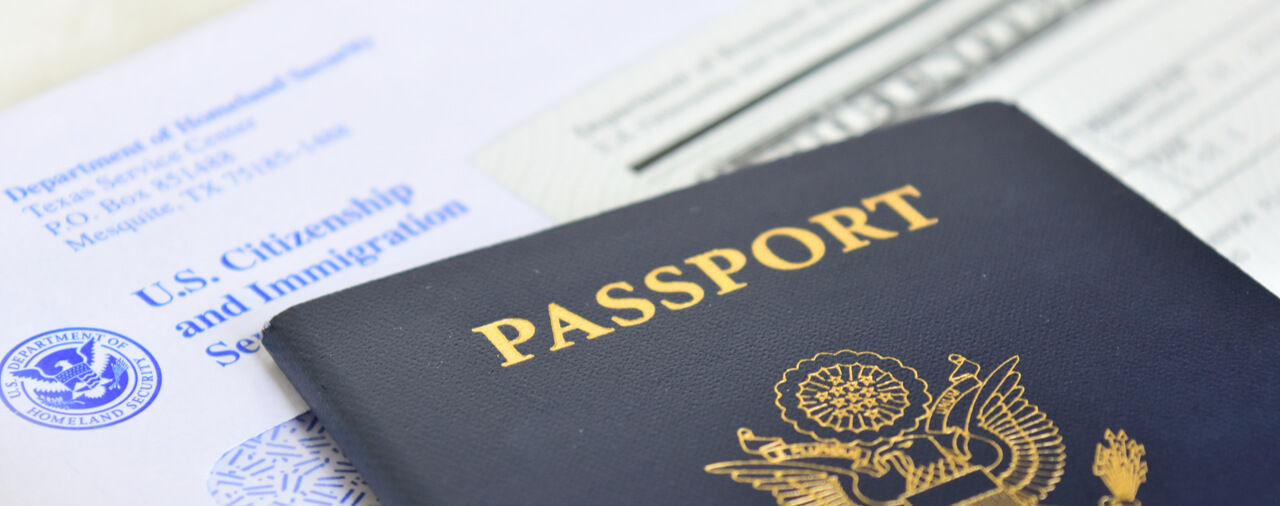- Introduction
- Relevant Statute
- Valid Offer of Employment Requirement for Adjustment (8 C.F.R. 245.25)
- Same or Similar Occupational Requirement
- Portability With Unapproved I-140 Petition
- Filing Procedures
- Priority Dates
- Withdrawn Petitions
- Revoked Petitions
- Adjustment of Status Applicant in Removal Proceedings
- Conclusion
Introduction
Under section 204(j) of the Immigration and Nationality Act (INA), the beneficiary of an approved employment-based immigrant visa petition with an adjustment of status application that has been pending for at least 180 days may, under certain circumstances, exercise Form I-140, Immigrant Petition for Alien Worker portability. The portability provision found in section 204(j) — which was codified in section 106(c) of the American Competitiveness in the 21st Century Act (AC21) — grants job flexibility to these employment-based adjustment of status applicants by allowing them to port their Forms I-140 to new employers. In this article, we will examine the Form I-140 portability provisions. This article includes information found in the November 18, 2016, rule titled “Retention of EB-1, EB-2, and EB-3 Immigrant Workers and Program Improvements Affecting High-Skilled Nonimmigrant Workers” [see 81 FR 82398] [see article].
Relevant Statute
The Form I-140 portability provision is found in the INA at section 204(j). The provision reads as follows:
A petition under [section 204(a)(1)(D)] of this section for an individual whose application for adjustment of status [under] section 245 [of the INA] has been filed and remained unadjudicated for 180 days or more shall remain valid with respect to a new job if the individual changes jobs or employers if the new job is in the same or similar occupational classification for which the petition was filed.
Breaking down the statute, we see that section 204(j) sets forth three explicit requirements for exercising Form I-140 portability:
1. Individual must have filed an adjustment of status application based on a petition in the EB1, EB2, or EB3 preference categories;
2. Adjustment of status application must be pending and have remained unadjudicated for at least 180 days; and
3. The new job to which the employee intends to port his or her I-140 petition must be in the same or similar occupational classification as the position described on the I-140 petition.
Section 212(a)(5)(A)(iv) also addresses Form I-140 petition portability:
A labor certification under [section 212(a)(5)(A)(i)] with respect to an individual whose petition is covered by section 204(j) of [the INA] shall remain valid with respect to a new job accepted by the individual after the individual changes jobs or employers if the new job is in the same or similar occupational classification as the job for which the certification was issued.
Section 212(a)(5)(A)(iv) thus makes explicit that, if an alien properly follows the section 204(j) portability provisions, his or her approved labor certification application will remain valid with respect to the new position. This statutory provision is crucial because labor certification applications (where applicable, some employment-based petitions that are eligible for 204(j) portability do not require labor certification) are generally specific as to a place of employment. Accordingly, section 212(a)(5)(A)(iv) is important in that it allows the beneficiary of an I-140 petition to exercise portability to work in a different geographic area than for which he or she was approved in the original I-140 petition.
The purpose of the I-140 portability provisions is to grant job flexibility to adjustment of status applicants in the first three employment-based preferences with long-pending and unadjudicated adjustment of status applications. Although the United States Citizenship and Immigration Service (USCIS) seeks to process all petitions and applications expeditiously, many applicants nevertheless face long wait times. I-140 portability provides some of these applicants with a means to change employers or positions in the United States while their applications are pending. In subsequent sections, we will examine many different components of I-140 portability. Notably, section 204(j) allows beneficiaries to find a new qualifying offer of employment if, after 180 days from the date of filing the adjustment application, the original offer of employment is no longer viable.
Valid Offer of Employment Requirement for Adjustment (8 C.F.R. 245.25)
On November 18, 2016, the Department of Homeland Security (DHS) promulgated new rules regarding section 204(j) portability. These rules are found in the new 8 C.F.R. 245.25 [PDF version]. In this section, we will examine the new 8 C.F.R. 245.25.
8 C.F.R. 245.25(a) makes clear that an alien who seeks to adjust status on the basis of an employment-based petition filed under section 204(a)(1)(F) of the INA (describing EB1, EB2, and EB3 preference categories) must have a valid offer of employment based on a valid immigrant visa petition at the time his or her adjustment of status application is adjudicated.
To assist in adjudications, the USCIS created Supplement J to the Form I-485, Application to Register Permanent Residence or Adjust Status. The USCIS may require the applicant to establish that he or she meets the requirement of 8 C.F.R. 245.25(a) on the Supplement J, or the applicant may affirmatively choose to demonstrate that he or she meets the requirements.
On the Form I-485, Supplement J, the applicant must endeavor to establish that he or she meets the requirements of 8 C.F.R. 245.25(a) in accord with form instructions and through the submission of any supporting material and credible documentary evidence.
First, 8 C.F.R. 245.25(a)(1) and (2) set forth two distinct ways for meeting the requirement of establishing that the applicant’s adjustment application is based on a valid offer of employment based on a valid immigrant visa petition.
Under 8 C.F.R. 245.25(a)(1), the applicant may endeavor to establish that the employment offer by the petitioning employer who filed the Form I-140 is continuing. In general, this will apply to cases where the applicant is seeking adjustment of status based on the offer of employment for the position offered by the employer who filed the original I-140 petition.
8 C.F.R. 245.25(a)(2) sets forth the rules for meeting the requirement after using the section 204(j) portability provisions. Under this provision, the applicant may endeavor to establish that under the section 204(j) rules, he or she has a new offer of employment from:
The petitioning employer;
A different U.S. employer; or
Him or herself (self-employment position),
provided, however, that the offer is in the same or similar occupational classification as the employment offered on the I-140 petition. If the applicant is seeking to establish that he or she has a qualifying offer of employment based on a qualifying petition under 8 C.F.R. 245.25(a)(2), he or she must meet additional regulatory requirements.
First, under 8 C.F.R. 245.25(a)(2)(i), the alien must establish that his or her adjustment of status application, based on a qualifying immigrant visa petition, has been pending for 180 days or more.
Under 8 C.F.R. 245.25(a)(2)(ii)(B), the applicant must also establish either that (A) his or her petition has already been approved; or (B) that the petition is pending when he or she notifies the USCIS of a new job offer 180 days or more after the adjustment of status application is filed, and the petition is subsequently approved.
There are two sub-regulations regarding 8 C.F.R. 245.25(a)(2)(ii)(B), which addresses situations in which the applicant exercises section 204(j) portability with a pending I-140 petition. First, under 8 C.F.R. 245.25(a)(2)(ii)(B)(1), the pending petition will be adjudicated without regard to the requirement in 8 C.F.R. 204.5(g)(2), which requires the petitioner to continuously establish the ability to pay the proffered wage until the beneficiary obtains lawful permanent resident (LPR) status. Under 8 C.F.R. 245.25(a)(2)(ii)(B)(2), the pending petition will be approved if it was eligible for approval at the time of filing and if it remained eligible for approval until the alien’s adjustment petition had been pending for 180 days, unless such approval at the time of adjudication would be inconsistent with a requirement of the INA or other applicable statute. In short, 8 C.F.R. 245.25(a)(2)(ii)(B)(2) makes it a requirement that, in considering an adjustment application by an alien who exercised section 204(j) portability, the USCIS must consider whether the petition was approvable at the time it was filed and while the alien’s adjustment application was pending for 180 days. However, provided those two requirements are met, it does not matter whether the original employer would have qualified subsequently.
Under 8 C.F.R. 245.25(a)(2)(iii), the I-140 petition must not have been revoked. In short, an adjustment of status application based on an I-140 petition cannot be approved if the underlying I-140 petition was revoked.
Finally, under 8 C.F.R. 245.25(a)(3), both the applicant and the intended employer (regardless of whether it is the original employer, a new employer, or the applicant him or herself in a self-employment situation) must demonstrate the intention for the applicant to be employed under the continuing or new employment offer. This means that the employer must intend to employ the applicant within a reasonable period upon his or her acquisition of LPR status.
Please note that 82 FR 27540 makes clear that applicants applying for adjustment of status on the basis of a national interest waiver as well as those seeking adjustment on the basis of an approved immigrant visa petition for aliens of extraordinary ability are not required to use the Form I-485 Supplement J. There is currently no additional fee for the Supplement J.
Same or Similar Occupational Requirement
A key requirement for exercising section 204(j) portability is that the new position be in the “same or similar” occupational classification. 8 C.F.R. 245.25(b) defines the term “same occupational classification” as meaning “an occupation that resembles in every relevant aspect the occupation for which the underlying employment-based immigrant visa petition was approved.” The regulation defined the term “similar occupational classification” as “an occupation that shares essential qualities or has a marked resemblance or likeness with the occupation for which the underlying employment-based immigrant visa petition was approved.”
On March 16, 2016, the USCIS released a comprehensive memorandum on this provision titled “Determining Whether a New Job is in ‘the Same or Similar Occupational Classification for Purposes of Section 204(j) Job Portability” [PDF version].
In general, the USCIS will rely on several resources to compare the occupation described on the I-140 petition with the new position. Chief among these, the USCIS will refer to the Department of Labor’s (DOL’s) “Standard Occupational Classification Codes” (SOC). In comparing two positions, the USCIS will examine the following factors (note that the list is non-exhaustive):
Job duties of the respective jobs;
The skills, experience, education, training, licenses, or certifications required for those jobs;
The wages offered for those jobs; and
Other material and credible evidence.
Furthermore, depending on the facts presented in the specific case, the same or similar memo explains that career progression can be taken into account for section 204(j) purposes. There is no clear-cut rule regarding career progression. For example, the memorandum explains that a generally permissible case would be if an applicant who is not a manager or supervisor seeks to port to a more senior related position that does not have a managerial or supervisory element. However, the analysis becomes slightly more complicated if, for example, the same applicant seeks to port to a position that does have a managerial or supervisory element.
Self-petitioners are permitted to exercise section 204(j) portability provided that the new position meets all of the applicable section 204(j) requirements.
Please see our comprehensive article on the March 16, 2016 memorandum to learn more about the USCIS’s rules regarding same or similar occupational classifications in the section 204(j) context [see article]. Our full article examines in detail each point discussed in this section and offers the examples provided by the USCIS in its memorandum. It also examines special cases for porting to self-employment and portability for multinational managers and executives.
Portability With Unapproved I-140 Petition
When AC21 was signed into law, simultaneous filing of the I-140 and the Form I-485 was not permitted. However, that changed subsequent to the passage of AC21. Accordingly, there are cases where a beneficiary whose I-485 has been pending for 180 days or more will have not yet received a final decision on the underlying I-140.
In cases where the I-140 petition is approved when the applicant hits the 180-day mark with his or her unadjudicated adjustment application, it is presumed that he or she may exercise section 204(j) portability provided that the underlying petition is not revoked and the new position meets the section 204(j) requirements. The situation is slightly more complicated in cases where the I-140 petition remains unadjudicated.
On October 20, 2010, the Administrative Appeals Office (AAO) decision in the Matter of Al Wazzan, 25 I&N Dec. 359 (AAO 2010) [PDF version], was designated as a precedent decision. In Matter of Al Wazzan, the AAO held that a I-140 petition must be approvable in order for the applicant to be eligible to exercise I-140 portability. The I-140 petition itself is not made valid by virtue of the separate fact that the I-485 remains unadjudicated for 180 days. If the I-140 petition is denied, it cannot serve as the basis of a portability request even if the beneficiary’s Form I-485 adjustment applicant has been pending for 180 days or more. As we noted in the new regulations, the I-140 petition must have been approvable when filed and for 180 days while the adjustment application remained unadjudicated in order for the alien to adjust status.
On December 27, 2005, Michael Aytes, the then-Acting Director of Domestic Operations for USCIS, released a USCIS Memorandum titled “Interim guidance for processing I-140 employment-based immigrant petitions and I-485 and H-1B petitions affected by the American Competitiveness in the Twenty-First Century Act of 2000 (AC21) (Public Law 106-313)” [PDF version]. In cases where a beneficiary ports off an unapproved I-140 and I-485 petition, Aytes directed the USCIS to follow the following procedures:
A. Review the I-140 petition to determine if the preponderance of the evidence establishes either that the case is approvable or that the case would have been approvable if it had been adjudicated within 180 days. If it is approvable but for an ability to pay issue or any other issue arising after filing the petition, it should be approved on its merits. Then the adjustment application should be adjudicated in order to determine whether the new position meets the “same or similar” requirement for section 204(j) purposes.
B. The USCIS should file a request for evidence (RFE) if more evidence is required to solve a material issue (one not noted in point A).
The guidance was reaffirmed in a 2008 memorandum by Acting Associate Director, Domestic Operations, Donald Neufeld, “Supplemental Guidance Relating to Processing Forms I-140 Employment-Based Immigrant Petitions and I-129 H-1B Petitions, and Form I-485 Adjustment Applications Affected by the American Competitiveness in the Twenty-First Century Act of 2000 (AC21) (Public Law 106-313), as amended, and affected by the American Competitiveness and Workforce Improvement Act of 1998 (ACWIA), Title IV of Div. C. of Public Law 105-277” [PDF version].
It is worth noting that both memoranda relied upon the guidance of Matter of Al Wazzan. This is because Al Wazzan had been designated as an adopted decision of the USCIS in 2005, prior to its being designated as a precedent decision in 2010 [see article].
The principles of Matter of Al Wazzan and the Neufeld and Aytes memoranda were incorporated into the new 8 C.F.R. 245.25(a)(2)(ii).
Filing Procedures
The applicant may use the Supplement J to the Form I-485, Confirmation of Bona Fide Job Offer or Request for Job Portability Under INA Section 204(j), in order to affirmatively request section 204(j) portability benefits. We detailed the process in the section on the new regulations in 8 C.F.R. 245.25.
Alternatively, when filing a section 204(j) portability request, the beneficiary or his or her representative for the adjustment of status application must send a letter from the new employer specifying the following:
1. The job duties of the new position;
2. The minimum education and training requirements of the new petition;
3. The date on which the beneficiary began or will begin employment; and
4. The offered salary or wage.1
The letter must be signed by an appropriate authority with the new employer’s organization.2 Furthermore, the beneficiary must submit his or her Form I-485 receipt notice in order that the USCIS may determine whether his or her adjustment application was pending for at least 180 days.
In the event that the portability request is being filed on the basis of an unapproved (but neither denied nor revoked) I-140, the USCIS must determine whether the petition was approvable if it had been adjudicated within 180 days. We outlined the issues that USCIS considers in such cases in both or discussion of the 8 C.F.R. 245.25 rules and our outline of the Aytes memo. A key point that the USCIS will assess is whether the original offer of employment was a bona fide offer of employment. Furthermore, the USCIS will look to determine whether the beneficiary actually intended to accept the bona fide offer of employment. This second point is especially relevant in cases where the beneficiary endeavors to port to self-employment.
As we noted in our section on the statute, new employers are not required to obtain new labor certifications.
Priority Dates
Under the new 8 C.F.R. 204.5(e)(5), the beneficiary maintains his or her priority date if he or she properly ports to a new employer under section 204(j). This had been the policy of the USCIS previously, but the DHS formally codified it in the November 2016 rule.
Withdrawn Petitions
In order to port an I-140 petition, there must be an I-140 petition to port. It goes without saying that the withdrawal of an I-140 petition presents a serious problem for the beneficiary.
However, the new rule finalized on November 18, 2016, provided protections for beneficiaries with long-pending I-140 petitions. The new 8 C.F.R. 204.5(e)(2) prevents an I-140 petition that has been approved for 180 days or more from being automatically revoked based solely on the withdrawal of the petition by the petitioner or the termination of the petitioner’s business. Such petitions will remain valid for priority date retention purposes unless they are revoked under any grounds in the new 8 C.F.R. 204.5(e)(2). However, we must first note that this regulation refers to approved I-140 petitions, a separate issue from a pending I-485 adjustment application. The regulation does not ensure that the applicant will be eligible to exercise portability. To learn more, please see our full article [see article].
Revoked Petitions
The revocation of an I-140 petition is fatal in the section 204(j) portability context. It is an open question as to whether a beneficiary may challenge the revocation of a petition in court. In Kurapati v. U.S. Bureau of Citizenship and Immigration Services, 775 F.3d 1255 (11th Cir. 2014) [PDF version], the Eleventh Circuit held that a petitioner has standing to appeal the revocation decision in court.3 The Sixth Circuit held similarly in Patel v. U.S. Citizenship and Immigration Services, 732 F.3d 633 (6th Cir. 2013) [PDF version].
In a highly interesting decision, the United States Court of Appeals for the Second Circuit held in Mantena v. Johnson, 809 F.3d 721 (2d Cir. 2015) [PDF version], that courts had jurisdiction over a claim brought by a beneficiary who exercised section 204(j) portability, but where neither she nor her new employer were notified by the USCIS about its intent to revoke the underlying I-140 petition (notification was sent to the original employer). We have a full article discussing Mantena on site. The Seventh Circuit would reach a similar conclusion in Musunuru v. Lynch, 831 F.3d 880 (7th Cir. 2016) [PDF version].4 It is worth noting that the DHS addressed Mantena in the November 16, 2016 rule. It stated that while it acknowledged the concerns raised in Mantena regarding notification of revocation, the issue was outside the scope of its rulemaking (see 82 FR 82418). It is possible that the DHS will address the issue in the future.
Adjustment of Status Applicant in Removal Proceedings
Under the Matter of Marcal Neto, 25 I&N Dec. 169 (BIA 2010) [PDF version], immigration judges have authority to determine whether the validity of an approved immigrant visa petition is preserved when the beneficiary changes jobs or employers.5
Conclusion
Form I-140 petition is a very important and useful tool for beneficiaries of immigrant visa petitions. In addition to providing individuals with extra flexibility, the portability provisions may in certain cases allow a beneficiary to adjust status where he or she otherwise would have been unable to due to circumstances involving the original employer. The new rule finalized in November 2016 provided much needed clarity and guidance to the I-140 portability rules and procedures.
The beneficiary of an I-140 petition should remain in close contact with an experienced immigration attorney throughout the entire adjudicative process. In addition to assisting in general, an attorney can advise a beneficiary of his or her options regarding section 204(j) portability and assess any new proposed employment arrangements.
Please see our website’s full section on AC21 to learn about a variety of AC21 issues [see category].





